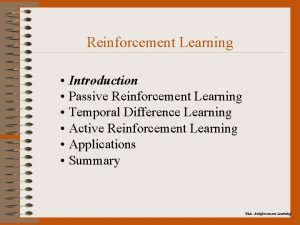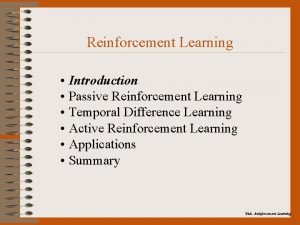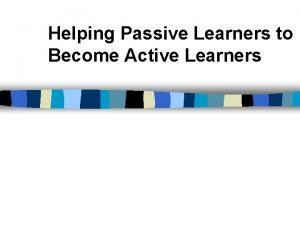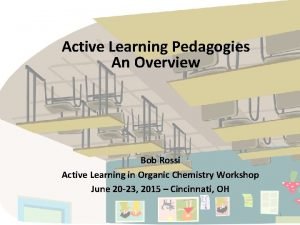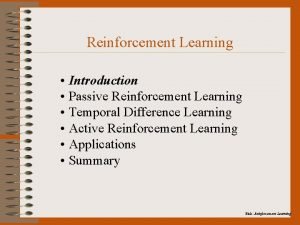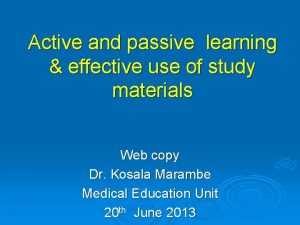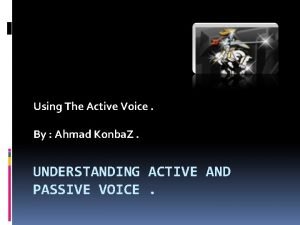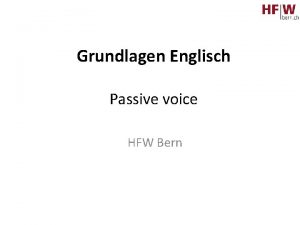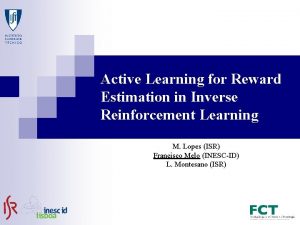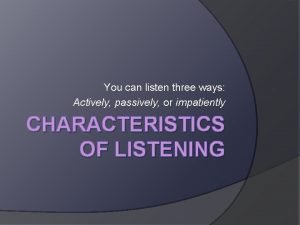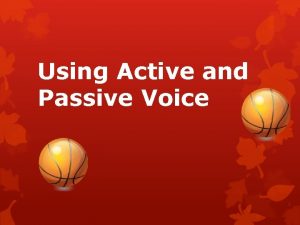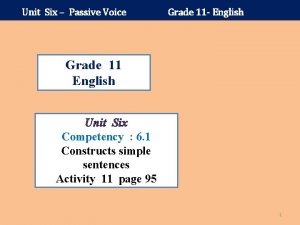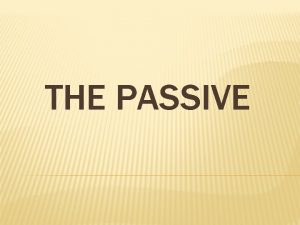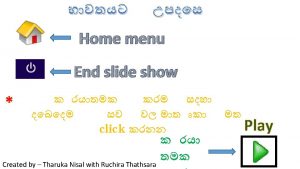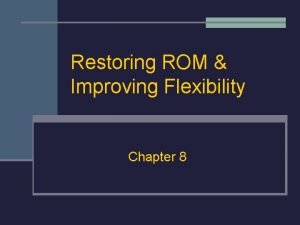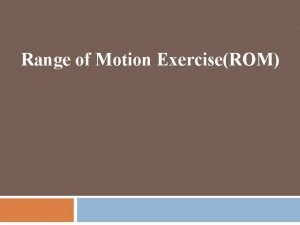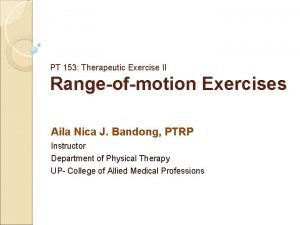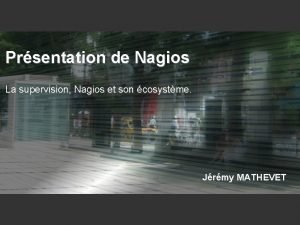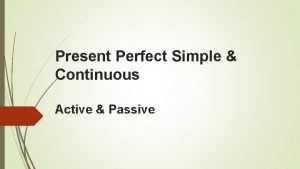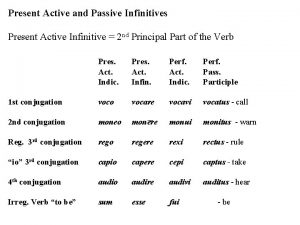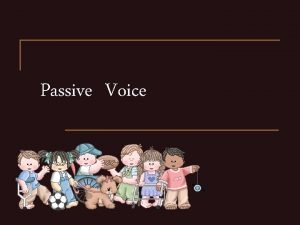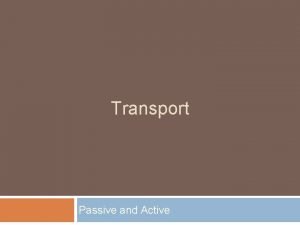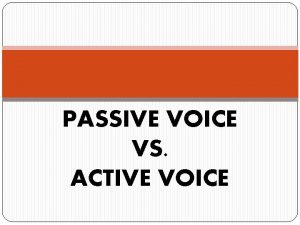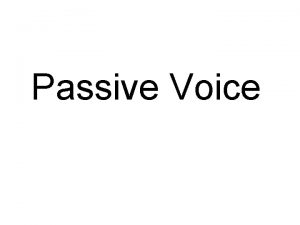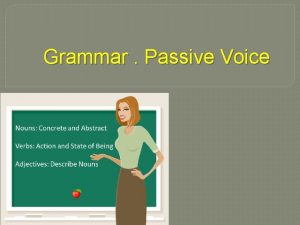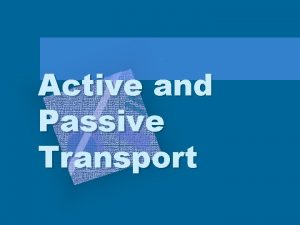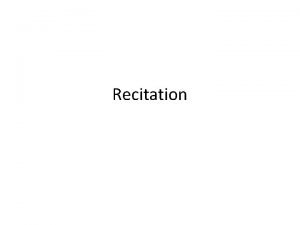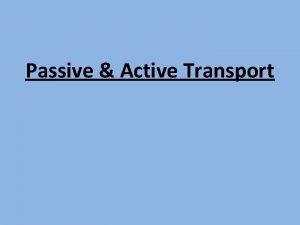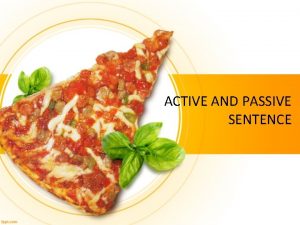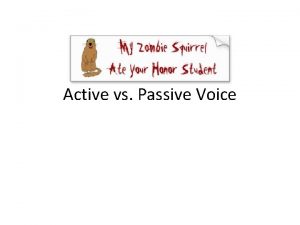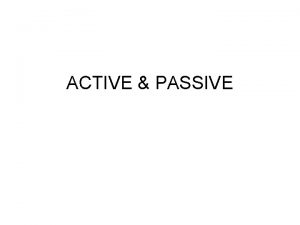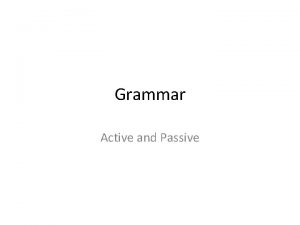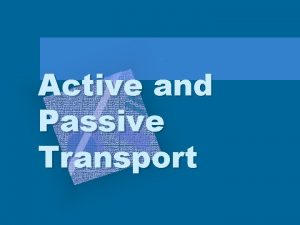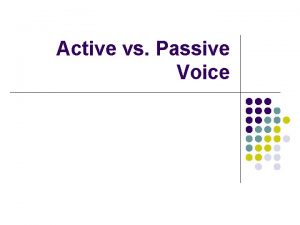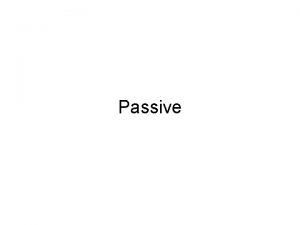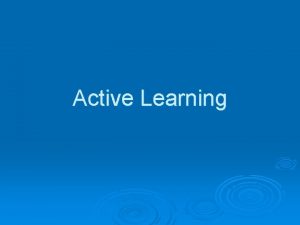Active Learning Learning from Examples Passive learning l








![Example Ø X = [0, 1] Ø W ~ U; Ø Vi=[the max X Example Ø X = [0, 1] Ø W ~ U; Ø Vi=[the max X](https://slidetodoc.com/presentation_image/03b168a70206b5b115cdaecec3633080/image-9.jpg)




![Example Ø W is in [0, 1]2 Ø X is a line parallel to Example Ø W is in [0, 1]2 Ø X is a line parallel to](https://slidetodoc.com/presentation_image/03b168a70206b5b115cdaecec3633080/image-14.jpg)



















- Slides: 33

Active Learning

Learning from Examples Ø Passive learning l A random set of labeled examples 2

Active Learning Ø Active learning l The leaner chooses the specific examples to be labeled The learner works harder, in order to use fewer examples 3

Membership Queries Ø The learner constructs the examples from basic units Ø Examples of problems that are only solvable under this setting (finite automata) Problem: might get to irrelevant regions of the input space 4

Selective Sampling Ø Available are 2 oracles: l l Sample – returning unlabeled queries according to the input distribution Label – given an unlabeled example, returns its label Ø Query filtering – From the set of unlabeled examples, choose the most informative, and query for their label. 5

Selecting the Most Informative Queries Input: Ø Concepts: Ø Bayesian Model: Ø Version Space: Ø X ~ D (in Rd) c: X {0, 1} C~P Vi=V(<x 1, c(x 1)>…<xi, c(xi)>) + + 6

Selecting the Most Informative Queries Ø Instantaneous information gain from the ith example: 7

Selecting the Most Informative Queries G(xi|Vi) For the next example xi: Ø P 0= Pr(c(xi)==0) Ø P 0 8
![Example Ø X 0 1 Ø W U Ø Vithe max X Example Ø X = [0, 1] Ø W ~ U; Ø Vi=[the max X](https://slidetodoc.com/presentation_image/03b168a70206b5b115cdaecec3633080/image-9.jpg)
Example Ø X = [0, 1] Ø W ~ U; Ø Vi=[the max X value labeled with 0, the min X value labeled with 1] - - - + + + 9

Example - Expected Prediction Error Ø The final predictor’s error is proportional to the length of the VS segment: l l Both Wfinal and Wtarget are selected uniformly from the VS (p = 1/L) The error of each such pair is |Wfinal - Wtarget| Error Wtarget Wfinal Using n random examples: 1/n But by cutting it in the middle the expected error decreases exponentially 10

Query by Committee (Seung, Opper & Sompolinsky 1992; Freund, Seung, Shamir & Tishby) Ø Uses oracles: l Gibbs(V, x) • h randp(V) • Return h(x) l l Sample Lable(x) 11

Query by Committee (Seung, Opper & Sompolinsky 1992; Freund, Seung, Shamir & Tishby) Ø While (t < Tn) l l x = Sample() y 1 = Gibbs(V, x); y 2 = Gibbs(V, x); If (y 1 != y 2) then • • • l Label(x) (and use it to learn and to get the new VS…) t=0 Update Tn endif End Ø Return Gibbs(Vn, x) Ø 12

QBC Finds Better Queries than Random: Ø Prob of querying an example X which divides the VS to fractions F and 1 -F: 2 F(1 -F) Ø Reminder: the information gain is H(F) Ø But this is not enough… 13
![Example Ø W is in 0 12 Ø X is a line parallel to Example Ø W is in [0, 1]2 Ø X is a line parallel to](https://slidetodoc.com/presentation_image/03b168a70206b5b115cdaecec3633080/image-14.jpg)
Example Ø W is in [0, 1]2 Ø X is a line parallel to one of the axes Ø The error is proportional to the perimeter of the VS rectangle 14

Ø If for a concept class C: l l VCdim(c) < ∞ The expected information gain of queries made by QBC is uniformly lower bounded by g>0 Ø Then, with probability larger than 1 -δ over the target concepts, the sequence of examples and the choices made by QBC: l l l NSample is bounded NLabel is proportional to log(NSample) The error probability of Gibbs(VQBC, x) < ε 15

QBC will Always Stop The information gain of all the samples (Isamples) grows more slowly as the no. of samples grows (proportional to d*log(me/d) ) Ø The information gain from queries (Iqueries) is lower bounded and thus grows linearly Ø Isamples≥Iqueries The time between two query events grows exponentially The algorithm will pass the Tn bound and stop Ø 16

17

Isamples Cumulative Information Gain The expected cumulative info. gain: 18

Isamples Ø Souer’s Lemma: The number of different sets of labels for m examples ≤ (em/d)d Ø Uniform distribution over n labels has the maximum entropy The max expected info. gain is d*log(em/d) 19

The Error Probability Ø Definition: Pr(h(x) ≠ c(x)); h, c~PVS Ø This is exactly the probability of querying a sample in QBC This is stopping condition in QBC 20

Before We Go Further… The basic intuition - gaining more information by choosing examples that cut the VS to parts of similar size Ø This condition is not sufficient Ø If there exists a lower bound on the expected info. gain QBC will work Ø The error bound in QBC is based on the analogy between the problem definition and Gibbs, not on the VS cutting. Ø 21

But in Practice… Ø Proved for linear separators if the sample space and VS distributions are uniform. Ø Is the setting realistic? Ø Implementation of Gibbs by Sampling from Convex Bodies 22

Kernel QBC 23

What about Noise? Ø In practice labels might be noisy Ø Active learners are sensitive to noise since they try to minimize redundancy 24

Noise Tolerant QBC Ø do l l Let x be a random instance. θ 1 = rand(posterior) θ 2 = rand(posterior) If argmax p(y|x, θ 1) ≠ argmax p(y|x, θ 2) then • ask for the label of x. • Update the posterior. Until no labels were requested for t consecutive instances. Ø Return rand(posterior) Ø 25

SVM Active Learning with Applications to Text Classification Tong & Koller (2001) Ø Setting: pool-based active learning Ø Aim: Fast reduction of the VS’s size Ø Identifying the query that halves the VS: l l l Simple Margin: choose the next query as the point closest to the current separator: min|wi * Φ(x)| Min. Max Margin: max min(m+, m-) – to get an max split Ratio Margin: – to get an equal split 26

SVM Active Learning with Applications to Text Classification Tong & Koller (2001) The VS in SVM is the unit vectors Ø (The data must be separable in the feature space) Ø Points in F hyperplanes in W Ø 27

SVM Active Learning with Applications to Text Classification Tong & Koller (2001) 28

Results Ø Ø Reuters and newsgroups data Each document is represented by a 105 dimensions vector of words frequencies 29

Results 30

Results 31

What’s next… Ø Theory meet practice Ø New methods (other than cutting the VS)… Ø Generative setting (“committee based sampling for training probabilistic classifiers”, Engelson, 1995) Ø Interesting applications 32

33
 Passive learning vs active learning
Passive learning vs active learning What is passive reinforcement learning
What is passive reinforcement learning Passive and active reinforcement learning
Passive and active reinforcement learning What is the difference between passive and active learning
What is the difference between passive and active learning What is the difference between passive and active learning
What is the difference between passive and active learning What is the difference between passive and active learning
What is the difference between passive and active learning Reinforcement
Reinforcement Active vs passive learning
Active vs passive learning Passive infinitive modal verbs
Passive infinitive modal verbs Passive sentence pattern
Passive sentence pattern Examples of passive instruments
Examples of passive instruments Use of passive voice
Use of passive voice Active and passive
Active and passive 3 to 8 decoder truth table
3 to 8 decoder truth table Membrane structures that function in active transport
Membrane structures that function in active transport Primary active transport vs secondary active transport
Primary active transport vs secondary active transport Active learning reinforcement learning
Active learning reinforcement learning Active and passive listening
Active and passive listening Louise made the chocolate cake active or passive
Louise made the chocolate cake active or passive Passive voice examples
Passive voice examples Unit 6 the passive
Unit 6 the passive They introduced me to her husband passive voice
They introduced me to her husband passive voice Types of passive transport
Types of passive transport Active attack and passive attack
Active attack and passive attack Active and passive voice comic strip
Active and passive voice comic strip Past continuous tense active and passive voice
Past continuous tense active and passive voice Range of motion active and passive
Range of motion active and passive Passive rom vs active rom
Passive rom vs active rom Hyperextension
Hyperextension Extension of shoulder
Extension of shoulder Range of motion exercise definition
Range of motion exercise definition Supervision nagios
Supervision nagios Present perfect simple active and passive
Present perfect simple active and passive Active and passive infinitive
Active and passive infinitive

